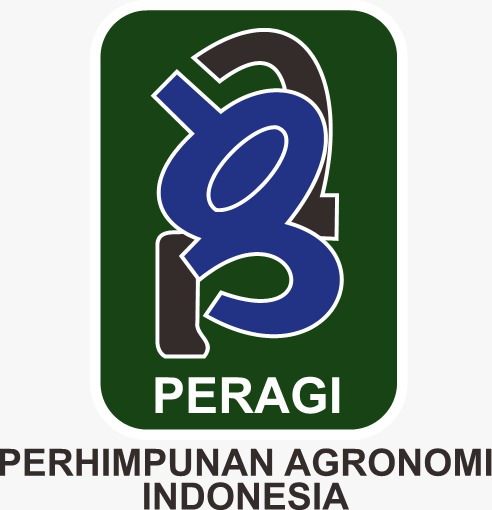Isolation And Identification Of Carried Seed Fungus Acacia crassicarpa A. Cunn. Ex Benth
ISOLASI DAN IDENTIFIKASI CENDAWAN TERBAWA BENIH Acacia crassicarpa A. Cunn. Ex Benth
Abstract
Penyakit yang disebabkan oleh cendawan pada bibit Acacia crassicarpa (Akasia) sangat berpotensi menimbulkan kerusakan pada bibit dan dapat terbawa benih. Bentuk kerusakan karena serangan patogen sangat bervariasi, bergantung pada jenis patogen, benih dan faktor lingkungan. Oleh karena itu dilakukan penelitian yang bertujuan untuk isolasi dan identifikasi patogen terbawa benih Akasia. Benih yang digunakan sebagai sumber isolat yaitu benih yang disimpan di Dry Cold Storage (DCS) dengan tahun panen benih 2012, 2015 dan 2016. Isolasi cendawan dari benih dilakukan dengan meletakkan benih di atas medium agar PPA dan dipurifikasi pada medisum PSA. Karakterisasi secara mikroskopik menunjukkan bahwa cendawan yang diisolasi terdiri dari 4 genus, yaitu Aspergillus, Rhizopus, Penicillium dan Fusarium. Isolat yang secara mikroskopis termasuk genus Fusarium diidentifikasi secara molekuler berdasarkan Internal Transcribed Spacer (ITS). Hasil BLAST menunjukkan bahwa sekuen (ITS) isolat 2012 dan 2016 dengan ukuran 570-580 bp memiliki kemiripan paling dekat dengan cendawan kelompok Fusarium sp. Nilai max identity isolat uji sebesar 88,87% (isolat 2012) dan 87,55% (isolat 2016). Hasil uji patogenisitas cendawan Fusarium sp. secara in vitro menunjukkan bahwa tidak ada gejala nekrosis yang muncul selama pengamatan. Dapat disimpulkan bahwa Fusarium yang diisolasi diduga tidak bersifat patogen.
Downloads
References
Bao JR, Deborah RF, Nichole RO, George L, Peter VB. 2002. Genetic Analysis of Pathogenic and Non-Patogenic Fusarium oxysporum from Tomato Plants. Canadian Journal of Botanical 80:271-9.
Darma, I G. K. T dan Sumrahardi, A . 2001. Fungi yang Berasosiasi dengan Benih Acacia crassicarpa Sesaat Setelah Panen dan Setelah Penyimpanan. JurnalManajemen Hutan TropikaVol. VII No. 2 : 1-6
Drancourt M., Bollet C., Carlioz A., Martelin R, Gayral JP., and Raoult D. 2000. 16S-Ribosomal DNA Sequence Analysis of a Large Collection of Environmental and Clinical Unidentifiable Bacterial Isolates. Journal of Clinical Microbiology. p. 3623-3630
Embaby, E.M. and M.M Abdel –Galil. 2006. Seed Borne Fungi And Mycotoxins Associated with Some Legume Seeds in Egypt. Journal of Applied Sciences Research. 2(11):1064-1071
Fadhilah, D. 2007. Identifikasi FungiyangBerasosiasi dengan Benih Mahoni (Swietenia macrophyllaKing) Sewaktu masih Di Pohon dan Setelah Di Simpan. [Skripsi]. IPB. Bogor.Gegory, T. R. 2008. Understanding Evolutionary Trees. Evo Edu Outreach(1): 121–137.
Heriansyah, P. (2019). Multiplikasi Embrio Somatis Tanaman Anggrek (Dendrobium Sp) Dengan Pemberian Kinetin Dan Sukrosa Secara In-Vitro. Jurnal Ilmiah Pertanian, 15(2), 67–78. doi:10.31849/jip.v15i2.1974
Janda, M.J., and Abbot, S.L. 2007. 16S rRNA Gene Sequencing for Bacterial Identification in the Diagnostic Laboratory: Pluses, Perils, and Piftalls. Journal clinic Microbiol. 45 (9): 2761-2764.
Joko, T. Nanda, K. dan Sedyo, H. 2011. Optimasi Metode PCR untuk Deteksi Pectobacterium carotovorum, Penyebab Penyakit Busuk Lunak Anggrek. Jurnal Perlindungan Tanaman IndonesiaVol. 17 No. 2:54-59.
Kwasna H, Bateman GL, Ward E, 2008. Determining Species Diversity of Microfungal Communities in Forest Tree Roots by Pure-Culture Isolation and DNA Sequencing. Applied Soil Ecology40:44-56
Kapoor, S. Harsh, N. S.K. andSharma, S. K. 2004. A New Wilt Diseaseof Acacia nilotica Caused by Fusarium oxysporum. Journal of Tropical Forest Science. 16 (4): 453-462.
Katherine dan Rina S. K. 2015. Identifikasi dan Uji Patogenisitas Fusarium spp. Penyebab Penyakit Busuk Pucuk pada Anggrek Bulan (Phalaenopsis sp).
Prosiding SeminarNasional Pendidikan Biologi 2015. Malang. Khan T, Mustafa G, Zaher-ud-Din. 2006. In-vitro Chemical Control of Aspergillus flavus Causing Seed Rot of Crops of Family Brassicaceae [abstract]. Pak J Sci Ind Res. 49(6):431–433.
Kress WJ, Liu AZ, Newman M, LiQj. 2005. The Molecular Phylogeny of Alpinia (Zingiberaceae): A complex and polyphyletic genus of gingers. American Journal of Botany 92: 167-178.
Lauren. 2014. Facts about paper: The Impact of Consumption. US. Tersedia pada http://www.thepaperlessproject.com/facts-about-paper-the-impact-of-consumption/.Diakses 8 Maret 2017.
Mardai dan Indrayadi, H. 2007. Pedoman Pengenalan Pengendalian Hama Penyakit AcaciadanEucalyptusdi Nursery. Divisi Penelitian dan Pengembangan Kehutanan. Perawang.
Mukarlina, Siti Khotimah dan Reny Rianti., 2010. Uji Antagonis Trichoderma harzianum Terhadap Fusarium spp. Penyebab Penyakit Layu Pada Tanaman Cabai (Capsicum annum) Secara InVitro. Skripsi. Universitas Tanjungpura.
Nei, M and S. Kumar. 2000. Molecular Evolution and Phylogenetics. Oxford University Press, Inc., Oxford: xiv
Authors who publish with Jurnal Agronomi Tanaman Tropika (JUATIKA) agree to the following terms:
Authors retain copyright and grant the Jurnal Agronomi Tanaman Tropika (JUATIKA) right of first publication with the work simultaneously licensed under a Creative Commons Attribution License (CC BY 4.0) that allows others to share (copy and redistribute the material in any medium or format) and adapt (remix, transform, and build upon the material for any purpose, even commercially) with an acknowledgment of the work's authorship and initial publication in Jurnal Agronomi Tanaman Tropika (JUATIKA).
Authors are able to enter into separate, additional contractual arrangements for the non-exclusive distribution of the journal's published version of the work (e.g., post it to an institutional repository or publish it in a book), with an acknowledgment of its initial publication in Jurnal Agronomi Tanaman Tropika (JUATIKA). Authors are permitted and encouraged to post their work online (e.g., in institutional repositories or on their website) prior to and during the submission process, as it can lead to productive exchanges, as well as earlier and greater citation of published work.







 More Information
More Information



